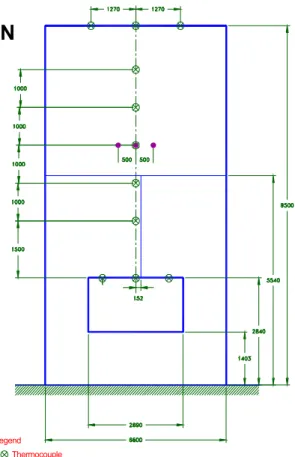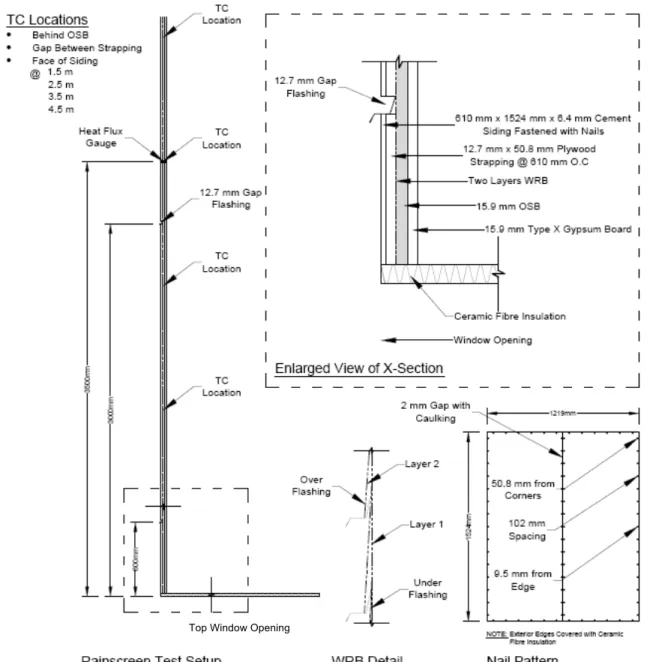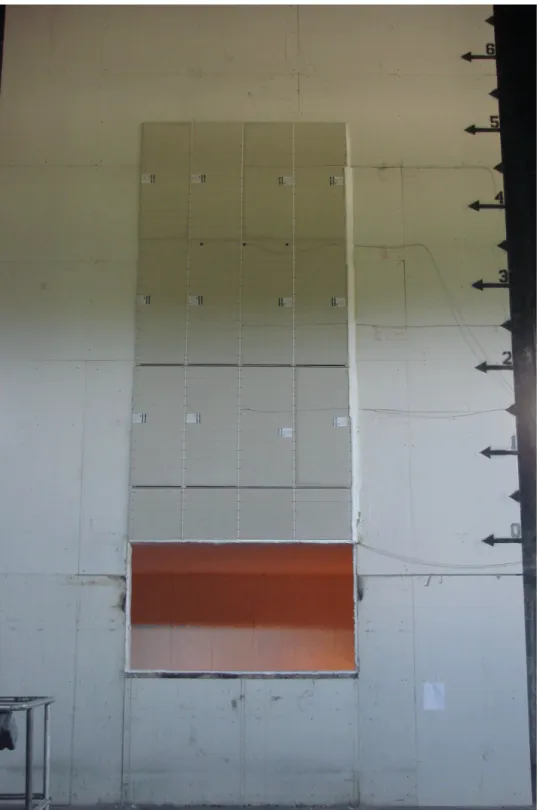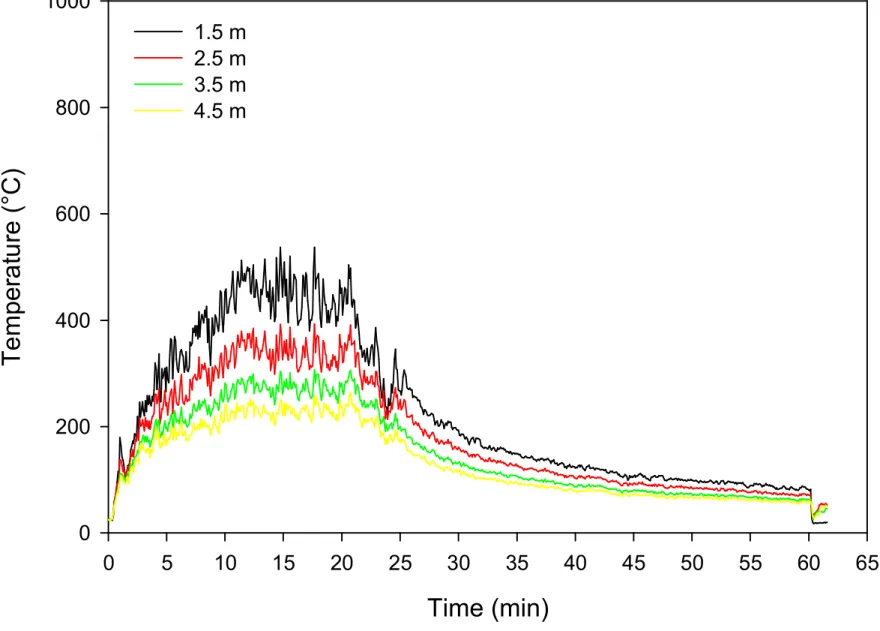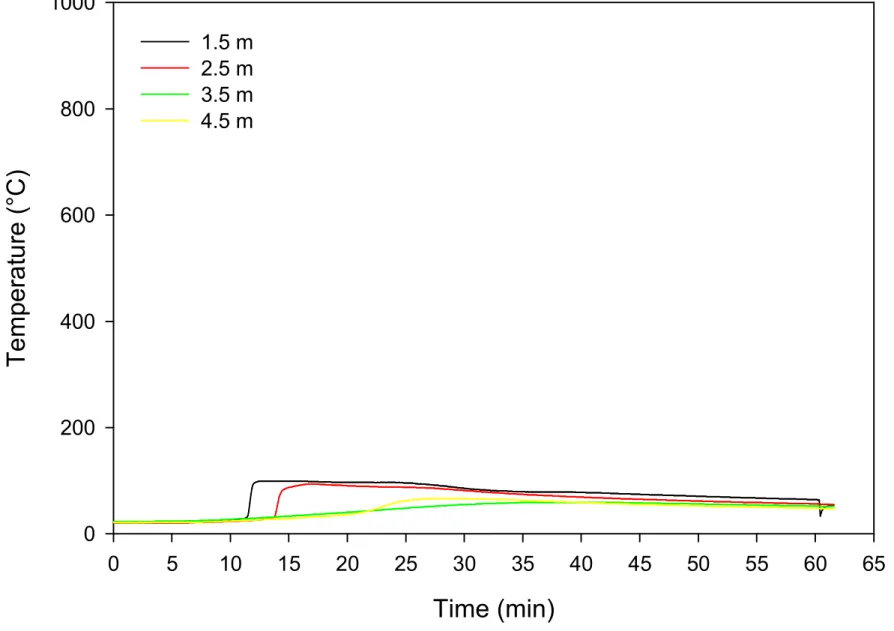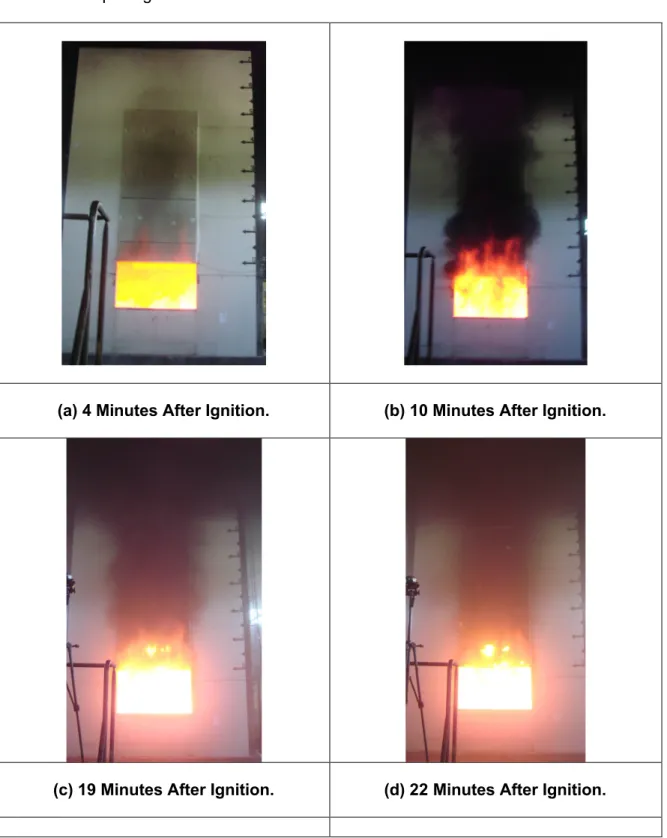Publisher’s version / Version de l'éditeur:
Vous avez des questions? Nous pouvons vous aider. Pour communiquer directement avec un auteur, consultez la Questions? Contact the NRC Publications Archive team at
PublicationsArchive-ArchivesPublications@nrc-cnrc.gc.ca. If you wish to email the authors directly, please see the first page of the publication for their contact information.
https://publications-cnrc.canada.ca/fra/droits
L’accès à ce site Web et l’utilisation de son contenu sont assujettis aux conditions présentées dans le site LISEZ CES CONDITIONS ATTENTIVEMENT AVANT D’UTILISER CE SITE WEB.
Client Report (National Research Council of Canada. Construction), 2014-03-31
READ THESE TERMS AND CONDITIONS CAREFULLY BEFORE USING THIS WEBSITE.
https://nrc-publications.canada.ca/eng/copyright
NRC Publications Archive Record / Notice des Archives des publications du CNRC :
https://nrc-publications.canada.ca/eng/view/object/?id=57d8b68a-28b0-42f5-974d-af531b22fa2c https://publications-cnrc.canada.ca/fra/voir/objet/?id=57d8b68a-28b0-42f5-974d-af531b22fa2c
NRC Publications Archive
Archives des publications du CNRC
For the publisher’s version, please access the DOI link below./ Pour consulter la version de l’éditeur, utilisez le lien DOI ci-dessous.
https://doi.org/10.4224/21274565
Access and use of this website and the material on it are subject to the Terms and Conditions set forth at
Solutions for mid-rise wood construction: fire test for rainscreen wall
system: Test EXTW-5: report to Research Consortium for Wood and
Wood-Hybrid Mid-Rise Buildings
NATIONAL RESEARCH COUNCIL CANADA
REPORT TO RESEARCH CONSORTIUM
FOR WOOD AND WOOD-HYBRID
MID-RISE BUILDINGS
Solutions for Mid-Rise Wood Construction
:
Fire Test for Rainscreen Wall System
(Test EXTW-5)
CLIENT REPORT: A1-100035-01.15
REPORT TO RESEARCH CONSORTIUM FOR WOOD
AND WOOD-HYBRID MID-RISE BUILDINGS
Solutions for Mid-Rise Wood Construction:
Fire Test for Rainscreen Wall System (Test EXTW-5)
E. Gibbs, B.C. Taber, G.D. Lougheed, J.Z. Su and N. Bénichou
Report No. A1-100035-01.15 Report date: March 31, 2014 Contract No. B-7000 (A1-100035) Prepared for Canadian Wood Council
FPInnovations
Régie du bâtiment du Québec
HER MAJESTY THE QUEEN IN RIGHT OF ONTARIO as represented by the Minister of Municipal Affairs and Housing
22 pages
This report may not be reproduced in whole or in part without the written consent of both the client and the National Research Council of Canada
TABLE OF CONTENTS
Contents
1 Introduction ...1
2 Test Facility...3
3 Description of Test Wall Assembly ...5
4 Instrumentation ...9
5 Atmospheric Conditions ...10
6 Test Procedure...10
7 Visual Observatins ...10
8 Results...11
9 Performance of the Wall Assembly...18
10 Remarks...21
11 Acknowledgments ...21
12 References ...22
LIST OF FIGURES Figure 1. Test facility (front view)...4
Figure 2. Test facility (side view). ...4
Figure 3. Construction details...7
Figure 4. Segment of wall system under construction...8
Figure 5. Wall assembly. ...9
Figure 6. Average room and window opening temperatures...13
Figure 7. Temperatures on surface of wall. ...14
Figure 8. Temperatures on unexposed side of cement board (side facing rainscreen cavity)...15
Figure 9. Temperatures on surface of 15.9 mm thick Type X gypsum board atinterface with OSB. ...16
Figure 10. Heat flux on wall. ...17
Figure 11. Wall assembly during the fire exposure. ...19
Figure 12. Wall assembly after fire exposure but before end of bbservation period. ...20
SOLUTIONS FOR MID-RISE WOOD CONSTRUCTION: FIRE TEST FOR RAINSCREEN WALL SYSTEM (TEST EXTW-5)
E. Gibbs, B.C. Taber, G.D. Lougheed, J.Z. Su and N. Bénichou
1 INTRODUCTION
The acceptable solutions provided in the 2010 National Building Code (NBC) Division B [1] limits the use of combustible (wood) construction based on building height. For example, for Group C (Residential), Group D (Business and Personal Services) and Group E (Mercantile) occupancies, combustible construction can be used up to 4 storeys, and up to 2 storeys for Group A – Division 2 (Assembly) occupancies. In addition to the building height limitation, there are also building area limitations in the 2010 NBC for the use of combustible construction for these occupancies. For buildings that exceed the height and area requirements for combustible construction, the
prescriptive requirements in the 2010 NBC require that noncombustible construction be used for the primary structural elements.
The prescriptive construction requirements for fire safety and protection of buildings, which are dependent upon the building size and occupancy type, are provided in Subsection 3.2.2 of the 2010 NBC. This includes the identification of the buildings for which noncombustible construction is required. The intent of the prescriptive
requirements for noncombustible construction as they relate to the NBC fire safety/fire protection of building objectives is “to limit the probability that combustible construction
materials within a storey of a building will be involved in a fire, which could lead to the growth of fire, which could lead to the spread of fire within the storey during the time required to achieve occupant safety and for emergency responders to perform their duties, which could lead to harm to persons/damage to the building”.
The 2010 NBC defines noncombustible construction as “that type of construction in
which a degree of fire safety is attained by use of noncombustible construction materials for structural members and other building assemblies” [1]. Article 3.1.5.1 requires that a
building or part of a building required to be of noncombustible construction be
constructed using noncombustible materials. The intent of this requirement, as it relates to the NBC fire safety/fire protection of building objectives, is “to limit the probability that
construction materials will contribute to the growth and spread of fire, which would lead to harm to persons/damage to the building”.
The NBC does permit, as exceptions, an extensive use of combustible materials in buildings otherwise required to have their primary structural elements to be of noncombustible construction. The allowed materials and associated limitations are primarily provided in Articles 3.1.5.2 to 3.1.5.21. Generally, the combustible elements permitted relate to interior finishes, gypsum board, combustible roofing materials, combustible plumbing fixtures, cabling, protected insulation, flooring, combustible glazing, combustible cladding systems, non-loadbearing framing elements in partitions, stairs in dwellings, and trim and millwork, among others.
buildings required to be of noncombustible construction. In the Scoping Study [2] for mid-rise and hybrid buildings, it was suggested that an alternative solution using wood construction may be developed to meet the intent of the prescriptive “noncombustibility” requirement for mid-rise (and taller) buildings. As one approach, encapsulation materials could be used to protect the combustible (wood) structural materials for a period of time in order to delay the effects of the fire on the combustible structural elements, including delay of ignition. In delaying ignition, any effects of the combustion of the combustible structural elements on the fire severity can be delayed. In some cases, and depending upon the amount of encapsulating material used (e.g. number of layers), ignition of the elements might be avoided completely. This scenario would primarily depend upon the fire event and the actual fire performance of the encapsulating materials used. A
research project, Wood and Wood-Hybrid Midrise Buildings, was undertaken to develop information to be used as the basis for alternative/acceptable solutions for mid-rise construction using wood structural elements.
In Article 3.1.5.5, the NBC allows the use of combustible components for non-loadbearing exterior walls to be used in a building required to be of noncombustible construction provided:
a) the building is
i. not more than 3 storeys in height, or ii. sprinklered throughout,
b) the interior surfaces of the wall assembly are protected by a thermal barrier conforming to Sentence 3.1.5.12.(3), and
c) the wall assembly satisfies the criteria of Sentence 3.1.5.5.(3) and 3.1.5.5.(4) when subjected to testing in conformance with CAN/ULC-S134 Fire Test of
Exterior Wall Assemblies [3].
Since the introduction of the requirements for the use of combustible components for non-loadbearing exterior walls in noncombustible construction, a number of proprietary cladding systems have been developed that meet the requirements in the NBC when tested using CAN/ULC-S134. However, one assumption in this testing is that the non-loadbearing exterior wall assemblies will be used in conjunction with an exterior wall system constructed using noncombustible structural elements either as infill or panel type walls between structural elements or attached directly to a loadbearing
noncombustible structural system (see Appendix Note A-3.1.5.5.(1) of the 2010 NBC). During the development of the CAN/ULC-S134 test method, three assemblies using lightweight wood frame construction met the criteria in the 2010 NBC for
non-loadbearing exterior walls [4, 5]:
1. Assembly 3.1. - Vinyl siding on gypsum sheathing on glass-fibre-insulated untreated (non-fire-retardant-treated) wood frame wall;
2. Assembly 3.3. - 12.7 mm fire-retardant-treated plywood on untreated (non-fire-retardant-treated) wood studs, with phenolic foam insulation in cavities; and 3. Assembly 3.4. - Aluminum sheet (0.75 mm) on fire-retardant-treated wood studs,
with phenolic foam insulation in cavities.
The results of the original three tests can currently provide the basis for developing generic alternative solutions for exterior wall assemblies for use in mid-rise buildings using lightweight wood frame construction. However, generic alternative solutions based
on these tests would be limited by the materials tested, including the insulation types used in the original tests.
One of the tasks in the project, Wood and Wood-Hybrid Midrise Buildings, was to develop further information and data for use in developing generic exterior wall systems for use in mid-rise buildings using either lightweight wood frame or cross-laminated timber as the structural elements. This report describes a screening fire test conducted on August 22, 2012 on a rainscreen wall system. The test was based on CAN/ULC-S134-13 [3]. However, the dimensions of the test wall (2.4 m wide by 4.9 m high) were less than those required for the standard test conducted in accordance with CAN/ULC-S134.
2 TEST FACILITY
The test was conducted using the exterior wall fire test apparatus as described in CAN/ULC-S134 (see Figure 1 and Figure 2) located in the Burn Hall of the NRC Fire Laboratory, Almonte, Ontario.
The burn room portion of the apparatus consisted of a reinforced concrete floor, concrete block walls and a precast concrete panel ceiling. The walls and ceiling were covered on the room side with 25 mm thick ceramic fibre insulation. The floor was covered with 57 mm thick fired clay paving stones. The inside dimensions of the burn room were 5.95 m wide, 4.4 m deep and 2.75 m high.
The fuel source in the burn room consisted of four 3.8 m long linear propane burners spaced equally along the width of the room and designed to provide a fire exposure equivalent to uniformly-distributed wood cribs of kiln-dried pine (with pieces 38 mm x 89 mm), having a total mass of approximately 675 kg. The burners were mounted 0.6 m above the surface of the paving stones.
Legend Thermocouple
Heat flux meter All dimensions in mm
Figure 1. Test facility (front view).
Figure 2. Test facility (side view).
4400 2750 3000 1300 2400 1300 1300 Mast Wall Sample 2100
N
3 DESCRIPTION OF TEST WALL ASSEMBLY
The wall assembly simulated a rainscreen wall system. The wall assembly was installed over 15.9 mm thick Type X gypsum board that formed part of the test facility. Drawings for the wall assembly are shown in Figure 3. Photographs of the wall assembly under construction and at the start of the test are shown in Figure 4 and Figure 5, respectively. Four sheets of 15.9 mm thick OSB were installed over the 15.9 mm thick Type X
gypsum board that formed part of the test facility to provide the base for a 2.4 m wide by 4.9 m high test wall assembly. The OSB layer simulated the exterior sheathing used in exterior wall assemblies in lightweight wood frame construction.
A water resistive barrier (WRB) was attached to the OSB. This material was paper impregnated with asphalt. This type of WRB (identified as WRB-1 in Reference [6]) was selected for use in the full-scale exterior wall assembly tests based on the results of cone calorimeter tests, which indicated that it ignited earlier and had a higher peak heat release rate and total heat output than a thermoplastic polyolefin (TPO) WRB. Two layers of the WRB were used in the test wall assembly.
Vertical strapping was attached to the OSB using 25.4 mm long common nails. The strapping material was 50.8 mm wide by 12.7 mm thick plywood.
Cement board typically used in bathroom and kitchen applications as a backer for ceramic tiles was attached to the plywood strapping using 31.8 mm long common nails. The cement board was used to simulate a typical noncombustible cladding. It was cut into 610 mm wide by 1524 mm high sections.
Holes were drilled in the cement board to limit damage to the cement board during installation to the strapping. The holes were spaced 102 mm o.c. starting 50.8 mm from the corners of the cement board sections and were located 9.5 mm from the edge of the cement board (see Figure 3).
There were 2 mm wide gaps between most of the cement board sections. This gap was filled with silicone caulking that is typically used for exterior applications.
A 12.7 mm wide rainscreen gap between cement board sections running the width of the test wall assembly was located 0.6 m above the window opening in the facility. A second rainscreen gap was located 3.0 m above the window opening. These gaps represented the typical openings used in rainscreen wall systems.
Metal flashing was installed in the 12.7 mm wide rainscreen gaps in the test wall assembly. The flashing was installed such that the second layer of WRB was on the outside of the flashing and the first layer was underneath the flashing (see Figure 3). Metal flashing (approximately 25 mm by 25 mm) was located at the outer edge of the window opening. The flashing was fastened to the assembly inside the window opening. The edges of the wall assembly at the window opening and the metal flashing were covered with 25 mm thick ceramic fibre insulation. The metal flashing and ceramic fibre
insulation are typically used for CAN/ULC-S134 test assemblies to limit flame penetration at the edges of the test wall assembly.
The vertical edges of the test wall assembly were protected using 25 mm thick ceramic fibre insulation.
The full test specimen was 4.9 m high and approximately 2.4 m wide. The wall assembly extended 4.9 m above the window opening in the test facility. It did not conform to the height and width requirements in CAN/ULC-S134 [3].
A horizontal joint (in this case, one of the rainscreen gaps) was located 3.0 m above the window opening. This complies with the requirement in CAN/ULC-S134 [3] that a horizontal joint is to be located 2.7 ± 0.3 m above the window opening in the wall assembly.
The test assembly had a vertical joint between cement panels above the window opening on the centerline of the assembly. It also had vertical joints 610 mm to either side of the centerline of the assembly.
The construction materials of the test wall assembly proceeding outward from the concrete block wall of the test facility were as follows:
1. 15.9 mm thick Type X gypsum board; 2. 15.9 mm thick OSB;
3. Two layers of WRB;
4. 12.7 mm thick plywood strapping; and, 5. 6 mm thick cement board.
Figure 3. Construction details.
Figure 5. Wall assembly.
4 INSTRUMENTATION
Room Temperatures – The burn room air temperature was monitored by six Type K thermocouples, enclosed in 6 mm (outside diameter) Inconel sheaths. The
from the inner surface of the wall. All room thermocouples were located on the vertical centre lines of the side walls.
Window Opening Temperatures – The temperature of the flames issuing from the
window opening was measured with three Type K, bare-beaded thermocouples installed 0.15 m below the top of the window opening, on the vertical centre line of the window opening and 0.4 m inward from the sides of the window opening (see Figure 1).
Wall Temperatures – The wall temperatures were monitored using Type K bare-beaded thermocouples on the vertical centre line of the wall. They were located at four levels above the top of the window opening at 1.0 m intervals, starting at 1.5 m above the window opening (see Figure 1). Three thermocouples were used at each level, one on the exterior surface of the wall assembly, the second on the unexposed side of the cement board and the third on the surface of the 15.9 mm Type X gypsum board at the interface with the OSB.
Heat Flow – The total heat flux to the wall above the window opening was monitored by three water-cooled heat flux meters (Medtherm Corp. Series 64) installed in the test wall, 3.5 m above the top of the window opening, one on the centre line of the wall and one on each side, 0.5 m from the centre line (see Figure 1).
Propane – The propane gas flow rate to the burners was monitored with a mass flow meter.
Visual Records – Video records of the front and side views were made during the test and digital photos were taken before, during and after the test.
Data Acquisition – All thermocouples, as well as the heat flux meters, were connected to a data acquisition system and readings were recorded at 5 s intervals.
5 ATMOSPHERIC CONDITIONS
At the time of the test, the ambient temperature in the Burn Hall was 6°C and the relative humidity was 53%.
6 TEST PROCEDURE
The test procedure was in accordance with CAN/ULC-S134 [3]. The pilot burners were lit prior to the commencement of the test. Gas flow to the burners was manually adjusted to follow the prescribed heat input required by the standard.
7 VISUAL OBSERVATINS
(min:sec)
0:00 Ignition of burners
2:00 Flames are exiting the room (window opening) 3:10 Flames are reaching 1.0 m
4:20 Flames are reaching 1.5 to 2.0 m 5:00 Flames are reaching 2.0 to 2.5 m 5:00 Steady state for gas flow
8:00 Intermittent flames at centre of bottom edge of rainscreen (i.e. at centre of top
edge of window opening) and along centre joint between cement panels.
10:00 Flame height is 2.0 to 2.5 m
10:55 Small intermittent flames at joint between cement panels at vertical centreline 11:00 Small intermittent flames at horizontal rainscreen gap at 0.6 m above window
opening
12:20 Small intermittent flames on vertical centerline joint above rainscreen gap at 0.6 m height
13:00 Flame height is 2.0 to 2.5 m, small intermittent flames at rainscreen gap at 0.6 m height
13:55 Intermittent small flames at vertical joint between cement panels, south side of assembly
15:00 Flame height is 2.0 to 2.5 m, small intermittent flames at rainscreen gap at 0.6 m above window opening
15:15 Continuous small flames at rainscreen gap at 0.6 m above window opening 17:00 Flame height is 2.0 to 2.5 m, small continuous flames at rainscreen gap at 0.6 m
above window opening
20:00 Flame height is 2.0 to 2.5 m, small continuous flames at rainscreen gap at 0.6 m above window opening
25:00 Gas is turned off
25:00 Small continuous flames at top of window opening, at the horizontal rainscreen gap at 0.6 m above window opening and at the vertical centerline joint between the window opening and the rainscreen gap
30:00 Small continuous flames at top of window opening, at the horizontal rainscreen gap at 0.6 m above the window opening and at the vertical centerline joint between the window opening and the rainscreen gap
35:00 Small continuous flames at the horizontal rainscreen gap at 0.6 m above the window opening and at the vertical centerline joint between the window opening and the rainscreen gap
40:00 Small flames at cracks in cement panels above window opening and small piece falls off at bottom left corner of cement panel at right side of centerline
45:00 No visible flames, hear crackling behind cement panels
50:00 No visible flames, smoke coming through openings (cracks and holes) in cement panels
55:00 No visible flames, smoke coming through openings (cracks and holes) in cement panels
60:00 No visible flames 60:00 End of Test
8 RESULTS
Room Temperatures – The average gas temperature in the burn room (average of six thermocouples) was as shown in Figure 6.
Window Opening Temperatures – The average temperature of the fire gases emerging from the window opening was as shown in Figure 6.
Wall Temperatures – The temperatures recorded on the outer surface of the test assembly are shown in Figure 7. The temperatures made a sharp rise over the first 5 minutes to reach steady state and a peak temperature of 537°C at 1.5 m above the window opening, 393°C at 2.5 m above the window opening, 307°C at 3.5 m above the window opening and 264°C at 4.5 m above the window opening.
Once the propane was turned off at 25 min, there was a gradual decay in the measured temperatures on the surface of the wall at all heights.
The temperatures recorded by the thermocouples on the unexposed side of the cement board (within the rainscreen cavity) are shown in Figure 8. This figure shows a gradual increase in the temperature at all heights with peak temperatures between 20 and 25 min. The peak temperature was 340°C at 1.5 m above the window opening, 283°C at 2.5 m above the window opening, 159°C at 3.5 m above the window opening and 159°C at 4.5 m above the window opening.
There was a gradual decrease in temperatures on the unexposed side of the cement board once the propane was shut off at 25 min.
Temperatures recorded by the thermocouples on the surface of the 15.9 mm thick gypsum board at the interface with the OSB, are shown in Figure 9. There was an increase in temperature at the 1.5 m height beginning at approximately 11.5 min to 99°C. The temperature subsequently decreased until the end of the test. There was also an increase in the temperature at the 2.5 m height beginning at approximately 14 min. The maximum temperature was 94°C and the temperature subsequently decreased until the end of the test. The reason for these temperature increases is not known.
The temperatures at the 3.5 and 4.5 m heights above the window opening slowly increased until they reached a low peak, and then very slowly decayed until the end of the test. The peak temperature at the 3.5 m height was 59°C at 38 min and, at 4.5 m, the maximum temperature was 67°C at 28 min.
The temperatures at the interface between the OSB and the 15.9 mm thick gypsum board were comparable at all heights after approximately 40 min.
Heat Flux - The total heat flux to the wall, as measured 3.5 m above the top of the window opening, is shown in Figure 10. The data shown in this figure has been smoothed using the procedure of a running average over one minute.
The heat flux values at all three locations showed a steady rise in exposure over
approximately the first 5 minutes, followed by various uneven peaks. The maximum one-minute averaged values recorded at the 3 locations were 23.2 kW/m2at the centre location.
Time (min)
0
5
10
15
20
25
30
T
em
pe
ra
tu
re
(
°C
)
0
200
400
600
800
1000
1200
1400
Room Average
Window Opeing Average
Time (min)
0
5
10
15
20
25
30
35
40
45
50
55
60
65
T
e
m
pe
ra
tu
re
(
°C
)
0
200
400
600
800
1000
1.5 m
2.5 m
3.5 m
4.5 m
Time (min)
0
5
10
15
20
25
30
35
40
45
50
55
60
65
T
e
m
pe
ra
tu
re
(
°C
)
0
200
400
600
800
1000
1.5 m
2.5 m
3.5m
4.5 m
Time (min)
0
5
10
15
20
25
30
35
40
45
50
55
60
65
T
e
m
pe
ra
tu
re
(
°C
)
0
200
400
600
800
1000
1.5 m
2.5 m
3.5 m
4.5 m
Time (min)
0
5
10
15
20
25
30
35
40
45
50
55
60
65
T
ot
a
l H
ea
t
F
lu
x
(k
W
/m
2)
0
5
10
15
20
25
30
35
40
45
North
Centre
South
9 PERFORMANCE OF THE WALL ASSEMBLY
A) Flame Spread over Exterior Face
After the gas was shut off at 25 minutes, the wall was observed for another 35 minutes at the request of the client. (Since its first publication in 1992, CAN/ULC-S134 has required that the assembly continue to be observed until all fires self-extinguish.
However, in most cases, the fires that remain after the propane is shut off are very small and pose a limited hazard. In the 2013 edition of the test standard, which was used as the basis for the tests in this project, the test is to be observed for a maximum of 60 min after the ignition of the burners – i.e. 35 min after turning the burner off. During the full 60 min, the test assembly must meet the requirements in the 2010 NBC for limiting the maximum flame height and 1-min averaged heat flux at the 3.5 m height.)
The cement board cracked particularly in the section between the window opening and the horizontal rainscreen gap at 0.6 m above the window opening. Flames from the wall assembly were observed above the window opening and at the horizontal rainscreen gap at 0.6 m above the window opening. There were some flames from the vertical strapping on the centre line of the wall. However, no flames propagated beyond the rainscreen gap located 3 m above the window opening. After the burner was shut off, there was limited visual evidence of burning, primarily occurring at the rainscreen gap at the 0.6 m height above the window opening. After 40 min from the start of the test, no visible flames were observed.
B) Incremental Radiant Heat Flow to the Wall above the Window Opening
The maximum one-minute averaged value of the total heat flux on the test wall at 3.5 m above the top of the window opening was 23.2 kW/m2. This is less than the maximum of
35 kW/m2specified in Sentence 3.1.5.5.(3) of the 2010 NBC [1]. For comparison, the
value for a noncombustible wall (Marinite) is 16 kW/m2. (Note: Marinite is a thermal
structural board insulation, which is a formed from calcium silicate with inert fillers and reinforcing agents. This material was used to provide a noncombustible wall, which was used for calibration and reference purposes in the initial test series used to develop the test method [5]).
C) Damage to the Wall Assembly
Figure 11 shows the wall assembly at four different times during the fire exposure, although in some cases smoke obscures part or all of the wall assembly.
Figure 12 shows the wall assembly during the observation period after the burner was shut off. This figure shows the extent of damage to the rainsreen assembly during the test. Figure 13 shows the wall assembly with some of the cement board panels removed once the test was complete, in order to examine the extent of damage under them. The primary area of damage was limited to the lower portion of the wall assembly between the window opening and the rainscreen gap at the 0.6 m height above the window opening. The cement board was cracked in this area but it stayed in place while the burner was on, and only a very small piece was lost during the observation period (once the burner was turned off). As can be seen in Figure 13, there was minimal or no
damage to the WRB and the OSB above the rainscreen gap at the 0.6 m height above the window opening.
(a) 4 Minutes After Ignition. (b) 10 Minutes After Ignition.
(c) 19 Minutes After Ignition. (d) 22 Minutes After Ignition.
Figure 12. Wall assembly after fire exposure but before end of bbservation period.
10 REMARKS
1. The test facility and test method, as described in this report, conform to the requirements of Article 3.1.5.5 of the 2010 NBC [1]. The test procedure was conducted in accordance with CAN/ULC-S134-13 [3]. However, the dimensions of the test wall assembly do not meet the requirements in the test standard.
2. The extent of damage to the test wall assembly was limited to an area directly above the window opening. The fire affected the cement board to a height of approximately 3 m. There was cracking of the cement board primarily in the lower section between the window opening and the rainscreen gap at 0.6 m above the window opening.
3. During the fire exposure there were flames to 3.0 m above the window opening. This is less than the 5 m limit for flame spread distance specified in
Sentence 3.1.5.5.(2) and defined in Appendix A (A-3.1.5.5.(2)) of the 2010 NBC [1].
4. The maximum one-minute averaged value of the total heat flux on the test wall assembly, at 3.5 m above the top of the window opening during the fire exposure was 23.2 kW/m2. This is less than the 35 kW/m2specified in Sentence 3.1.5.5.(3)
of the 2010 NBC [1].
5. A small fire continued to burn at the rainscreen gap at 0.6 m above the window opening after the propane was shut off at 25 min. This fire was limited to this area and did not propagate to areas above the rainscreen gap.
11 ACKNOWLEDGMENTS
Financial and in-kind support for the project provided by the following organizations is gratefully acknowledged:
Canadian Wood Council
Forestry Innovation Investment BC FPInnovations
Ontario Ministry of Municipal Affairs and Housing National Research Council Canada
Natural Resources Canada Régie du Bâtiment du Québec
Quebec government (Société d’Habitation du Québec, Société Immobilière du Québec, Ministère des Ressources Naturelles)Extensive technical input by staff from collaborating organizations is also gratefully acknowledged:
Rodney McPhee and Ineke Van Zeeland, Canadian Wood Council. Christian Dagenais, Mohammad Mohammad and Lindsay Osborne,
12 REFERENCES
1. 2010 NBC, National Building Code of Canada, National Research Council, Ottawa, Ontario, 2010.
2. Su, J., Gover, B., Lougheed, G., Benichou, N., Swinton, M., Schoenwald, S.,
Lacasse, M., Di Lenardo, B., Mostafaei, H. and Pernica, G., Wood And Wood-Hybrid Mid-Rise Buildings, Phase 1: Scoping Study, B4726.1, National Research Council, Ottawa, Ontario, 2011.
3. CAN/ULC-S134, Fire Test of Exterior Wall Assemblies, Underwriters Laboratories of Canada, Ottawa, Ontario, 2013.
4. Chauhan, R., Gosselin, G., Oleszkiewicz, I. and Richardson, K., Committee Paper #2 on Combustible Cladding, National Research Council, Ottawa, 1988.
5. Oleszkiewicz, I., Fire exposure to exterior walls and flame spread on combustible claddings, Fire Technology, Volume 26, 1990, p. 357-375.
6. Bijlos, M., Lougheed, G.D., Su, J.Z. and Benichou, N., Solutions for mid-rise wood construction: Cone calorimeter results for materials used in exterior wall tests, Report A1-100035-01.3, National Research Council, Ottawa, ON, 2014.
